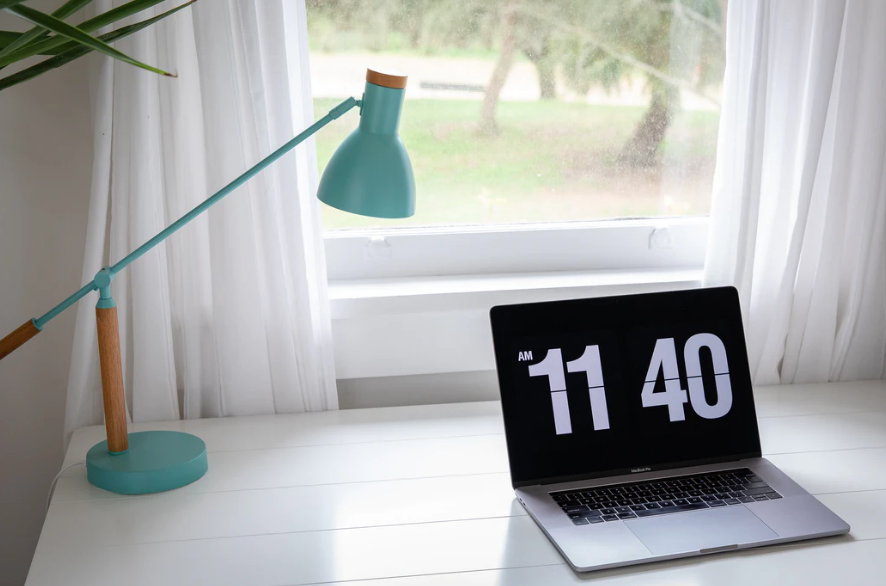Access to digital technology, especially during the Covid-19 lockdown, has proved a lifeline for many of us. It has allowed us to stay in touch, socialize and, for some of us, be able to keep working from home. It is, however, important to balance our reliability on technology and be aware of the impact if can have on our health and wellbeing.

Here are some tips on how to develop and keep positive digital habits, especially if your job currently relies on you working from behind a screen at home.
Set a clear workday. It can be easy, if working from home, to work longer hours than if you if you were in your place of work. Without a commute, for example, it can be easy to fill that time with work. If your regular work hours are 9 – 5.30, abide by those at home, and switch off your work computer or tablet at 5.30 for the rest of the evening. When you have finished work for the day, move away from screens, and if possible spend time outdoors, by going for a walk, or having a coffee outside.
Take breaks and be less sedentary. In your place of work you are more likely to step away from your desk, whether to speak with colleagues, attend meetings, collect items from the printer, etc. When working from behind a screen at home, be mindful that meetings are virtual and contact with colleagues is via email. Ensure you take a lunch break where you move away from your home work setup. Allow your eyes rest from screen time – now the lockdown rules are being loosened, perhaps arrange to meet a friend for a socially distanced picnic outdoors.
Return to pen and paper. If your job requires creativity, writing or planning, for example, why not take a pen and paper and draft and note-take away from your computer. It may help inspire you with a new perspective.
Focus on one task. When working from home, it can seem like a must to have notifications turned on at all times and to regularly check your emails. At the beginning of your workday, schedule your time, including time to check in on and respond to emails – as much as possible stick to your schedule. Focusing on one task at a time can be less stressful than switching between various digital windows.
Measure your screen time. It may be the case for many of us that we don’t quite realise how much time we are spending behind a screen. Try over a couple of days to time how long you are on your phone, tablet, computer, and watching television. If the amount of time surprises you, aim to perhaps lessen your screen time by a few minutes each day, and in those minutes commit to a hobby, for example reading a physical book or starting a jigsaw. Outside of work, if you find yourself reaching for your phone to occupy your hands, why not try a Sudoku puzzle.
Avoid screens in the bedroom. Many of us rely on our phones or digital alarms clocks in the mornings now. If possible, why no try switching to a traditional clock-face alarm clock and leave any screens, including tablets and mobile phones outside your bedroom. This will help prevent screens being the first and last things looked at sandwiching sleep.
Be kind to yourself. Balancing screen time can be tricky, between it being a source of winding down, a means to work and way to keep in touch, it has, for many of us, become a huge part of our daily lives and one that we have come to rely on. If you feel yourself becoming agitated or stressed from looking at screen for extended periods of time, encourage yourself to step away. Constantly being connected can be stressful, check in with yourself – do you need to be looking at screen at this time? A great practice to adopt is to take a book, magazine, cup of tea and leave all technology behind, for example your phone in another room, and a room that doesn’t have a television or a computer in it, if you are able to sit outside even better!
